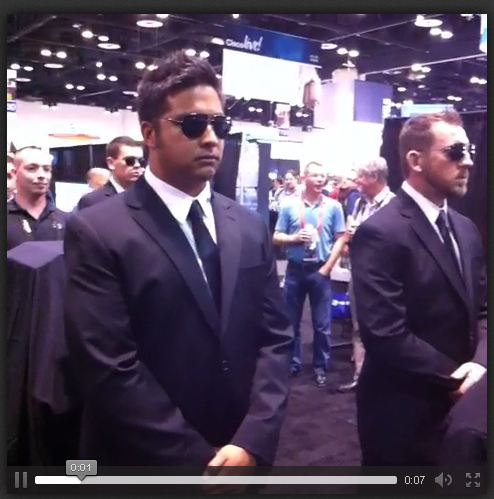Although I have only been working in Cisco Social Media for several months, I have discovered much about its impact and the strategies for leveraging it at both the corporate and personal level.
With the growing popularity of video services such as YouTube, Vine, and Instagram, it was only a matter of time before video content became a standard for all social media channels. Users want content delivered to them in the easiest, most effective manner that maximizes their time and capitalizes upon their interests. A video is often a great way to do this, but how it should be implemented is pivotal to it being successful in garnering attention.
Fortunately there are numerous mediums available today that allow for delivering video content specific to your needs, and the needs of your audience. But before choosing which of these to use, the user must consider the attention span of their audience, who their audience is, and what the learning goals are (if any). Vine, Instagram, and YouTube, are three different video hosting sites that integrate with all forms of social media, and all have different uses, advantages, and disadvantages.
Vine: Owned by Twitter, these 6 Second looping clips can be informative, funny, or creative. Vine videos are great for delivering content in the quickest possible manner. Due to their short durations, viewers are much more likely to click through and watch a vine video than a full blown YouTube video. In deciding to use a Vine video, the user must decide if it delivers the message they need in such a short time frame, or if they should upload using a longer video service. Below is a Vine taken at the Cisco Live (#clus) event, awaiting the press announcement.

Instagram: A popular photo sharing service owned by Facebook, Instagram recently added a video capturing feature as of June 20, allowing users to take up to 15 seconds of film. Users can then easily implement creative filters to change the color hues of the video, allowing for a unique artistic effect. Instagram is great for quickly creating content and adding visual editing capabilities. An important thing to consider in your use of Instagram is that it does not embed on Twitter, only displays a link due to their third-party policies.
![fstoppers-instagram-video[1]](https://storage.googleapis.com/blogs-images/ciscoblogs/1/fstoppers-instagram-video1-300x264.jpg)
A great example of a video perfect for YouTube can be viewed below, where Cisco’s Chief Futurist Dave Evans discusses the future of technology, and the Internet of Everything #IOE.
https://www.youtube.com/watch?v=zCNNTtaVVLE
All three of these services have a function to share directly to popular social media websites such as Twitter and Facebook. Keeping the functionality of these apps, their timeliness, and your audience in mind, you are well on your way to successfully integrating a video that demands attention across social media platforms.

I have used video submissions to various sites to help promote my small business here in Florida. They have really helped me stand out and brand my company. I appreciate the great read, thanks for sharing
Thanks Dan! I’m glad you found the information useful.
We use video in our social sharing as well. We don’t use vine a lot but after reading this article it reminds me how cool it is. One site we do use that wasn’t mentioned is Vimeo. Basically like youtube but not quite as popular. Thanks for the good read.
Vine is definitely worth looking into with its growing popularity. Vimeo is also a great video sharing service, my experience with it is that it is often niche communities such as artists or extreme sports. Thanks for your comment Jimmy!
Nicely done!
These social media networks are important. I haven’t come across Vine though.
Great post!
Thanks for sharing John! I’m pretty impressed with the rise of Vine – 6 seconds isn’t very long, but it’s amazing how much impact can be made within such a short period of time!
I wonder if in the near future we’ll see social video websites such as Youtube that focus only on the really short videos niche – just a few seconds long.
Do you thing there will be any demand for something like this?
That’s an interesting idea. I believe that is what Vine is really trying to capitalize on with short videos. It’s hard to say if content could really be communicated with only a few seconds, but if there was a medium that made it interesting I could see a demand for it.
Great read – I had not fully appreciated video integration and how this could be used to benefit a business.
Given me food for thought!
Vine is a good idea, it is very suitable for mobile devices, also today’s people do not want to read long articles or watch long videos.
thank you for this blog post.